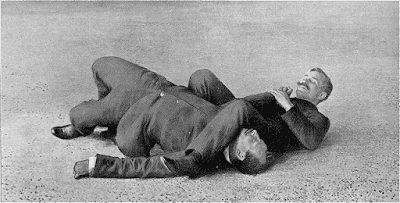Martial Arts and Convergent Evolution

One of the myths one encounters in debates on martial arts is that of the "single origin." This is the false idea that there must have been one "original art," and that others are derivatives. Some say Chinese kung fu is the mother of all arts, and that the Shaolin Temple is its birthplace. Others say the semi-mythical Bodhidharma is the origin, as he supposedly taught the Shaolin monks how to fight. Still others claim that Egypt is the origin, because of the wrestling art in the tomb of Baqet III , more popularly known as part of the Beni Hasa n tombs in Egypt dating to the 21st century BCE. It's a myth. Plenty of people like Iain Abernethy and friends have explained why there is no single origin. While it's true that some arts did indeed draw upon techniques from prior arts, it does not mean there is some sort of chain or tree that links all arts and techniques to a common ancestor. Recognizing that the single origin is a myth, how should we




